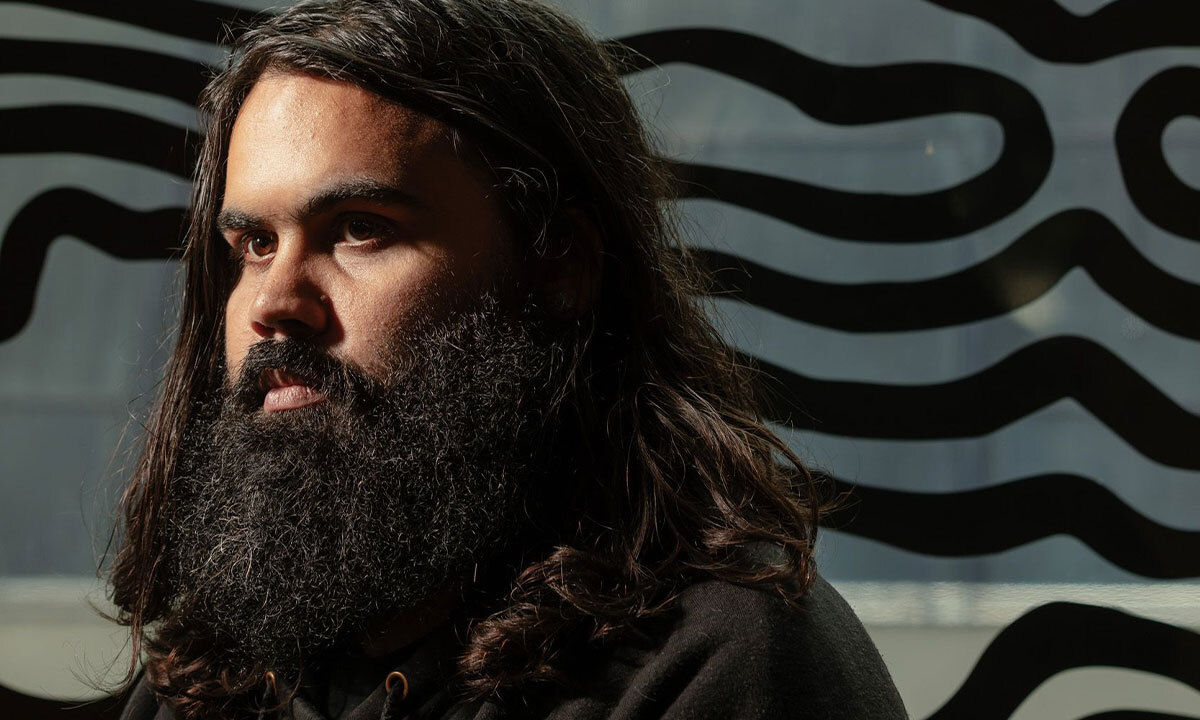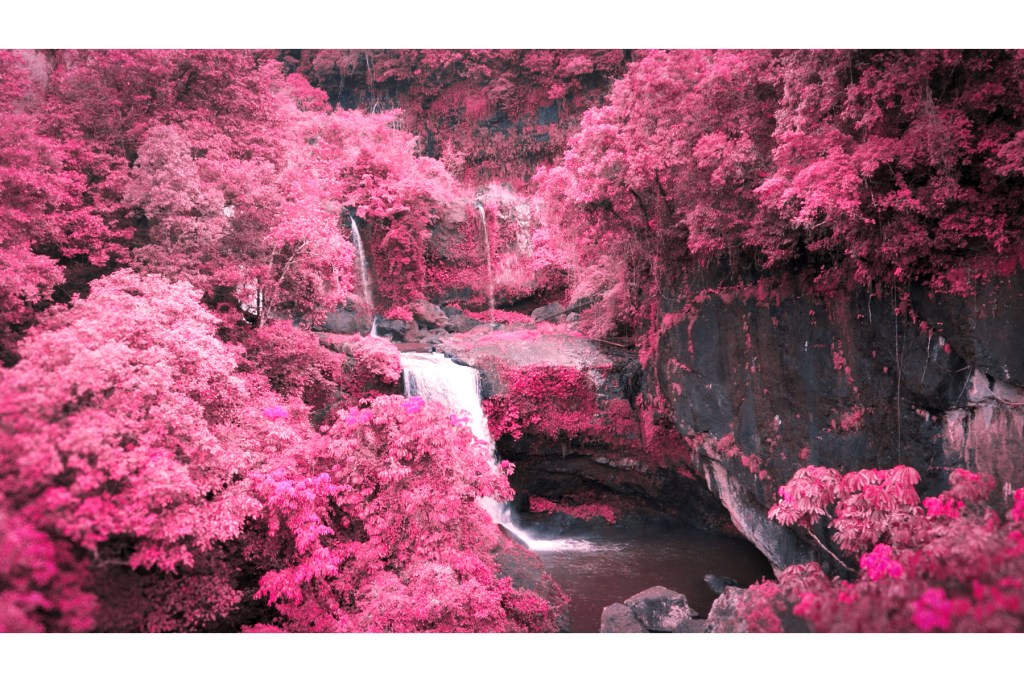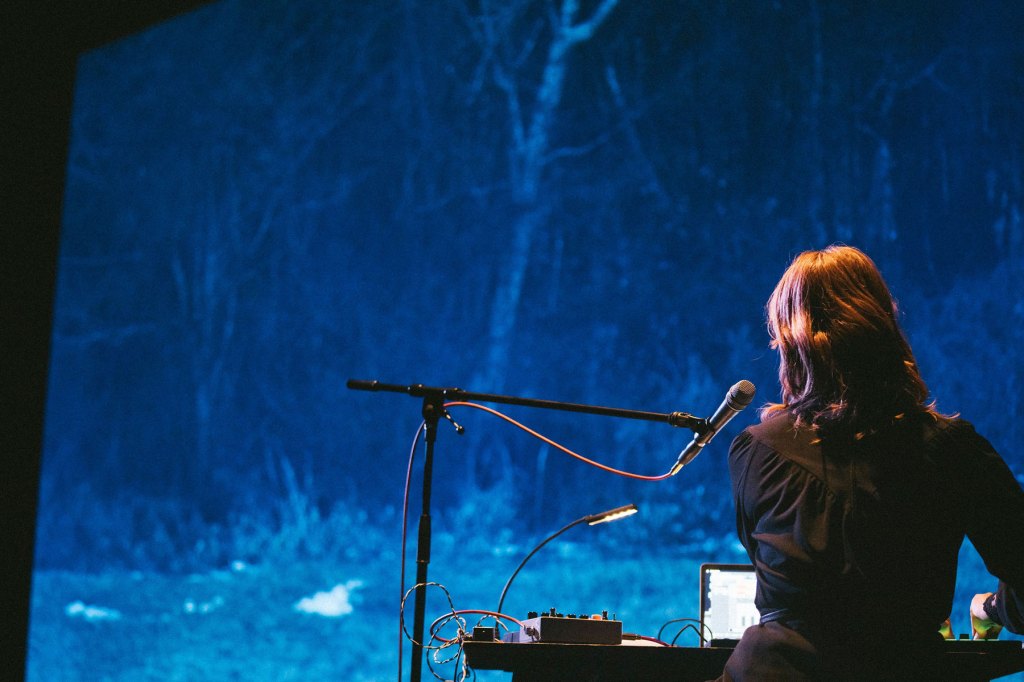MoB’s artist in residence Dylan Bolger on art, architecture and the Blak identity

If you’ve had the honour of wandering through the Museum of Brisbane in recent weeks, you’ve likely been witness to the striking ten-panel drawing adorning the walls of the Dome Gallery. The work marks the 100th and final intricately rendered piece in Leaf SZN – a mural series by proud Maiawali, Karuwali, Pitta-Pitta and Gomeroi artist, Dylan Bolger. With a background in architecture, Dylan has emerged as one of the country’s leading multidisciplinary artists, revered for his hand-drawn, highly detailed and large-scale works. As part of his larger artistic vision to ‘recolonise the coloniser’, Dylan uses the recurring motif of the ancient macaranga plant in Leaf SZN, a pioneer plant that is pivotal in the repopulation and regeneration of environmentally devastated areas, as an emblem of his people and culture. During his on-going residency at Museum of Brisbane, Dylan has transformed the Dome Gallery into his home studio. We were lucky enough to chat with Dylan about his Leaf SZN, Blak identity and destabilising the gallery setting.
To start, we’d love to know about the origins of your art. What led you to the world of visual art?
Professionally, I have been practising for the last three years, however I feel like I have had this Blak privilege growing up around some amazing artists [and] all this Blak excellence. So, I guess growing up in that environment, art has always been around me and something I’ve done since I was a kid.
In addition to art, you have professional experience as an Architectural Technician. Do you think your art is influenced by your architectural background? In what ways?
Maybe in some very pragmatic and direct ways. It definitely had influenced materiality, you know – timber and wood. I think the idea of doing 100 works comes from an architectural mindset. It being an iterative process, a level of discipline is required to stay focussed and consistent, most architecture projects take years to be realised. Leaf SZN has taken three.
You’re best known for large-scale and experimental artworks. What influences your signature style?
It’s pretty ironic because the only works I’ve shown are the large scale ones – there are 99 other works which are much smaller. I guess working in architecture has allowed me think about scale and working beyond the canvas – but in terms of signature style, I’ve had it since high school and the only difference between now and then is that I’ve introduced colour.
You’ve stated that your artworks prioritise the representation of your people. Why has your community remained such a major source of inspiration?
I think identity is a huge driver in how I even exist in this world. Whether or not I choose to, people view me this way, and I can’t escape it – not that I want to. The spaces that I occupy, I don’t see myself in them and I don’t see the people that I culturally identify with in them, so there’s a constant reminder of the lack of my community. Using my art and architecture is a way to embed them into spaces so that I don’t necessarily have to see myself in the people I can see myself in the work.
At the moment you are working as an Artist-in-Residence at the Museum of Brisbane. What can audiences expect from your time with MoB?
An interruption. A progression. Hopefully a sense of recolonising. Each time they come the space will be different. The art will be different.
As part of the residency, you’re completing a ten-panel drawing in the Dome Gallery. How have the dynamics of a museum residency impacted your artistic process?
I think it has enhanced it. It’s given me a platform that I haven’t previously had before. One of the things I want to mention [is that] I didn’t anticipate how taxing it would be on me – the constant eyes and people in my peripheral vision. I haven’t achieved the flow state I normally would because of the interruptions, I’m enjoying it but it’s exhausting.
During your residence you will complete the 100th and final piece of your Leaf SZN series. What was the inspiration that kick started this impressive artistic undertaking?
You can read more about that in the Museum when you visit.
Leaf SZN sees the Museum of Brisbane transform into your ‘home studio’. Why did you decide to disrupt the gallery experience through this exhibition?
It all comes back to that initial idea of recolonising the coloniser. There’s something poetic about a Blak person occupying a space like City Hall – it has a history as is a monument to the coloniser.
Coming back to the macaranga leaf itself as the concept, I wanted the space to change as the work developed. Looking at the architectural side of it – beyond the canvas and thinking along the lines of the art and space being cohesive. The process of art is when the art is happening and when it’s finished it becomes something else. The idea was to look at the process of the exhibition rather than the finished artwork.
Subscribe for updates
There’s an element of peeling the curtain back to give people access to something they don’t see or understand.
Aside from art, what do you do to unwind and relax?
Films and footy.
Dylan Bolger will be completing Leaf SZN at the Museum of Brisbane from October 8 to late November. Head to the Museum of Brisbane website to learn more.

